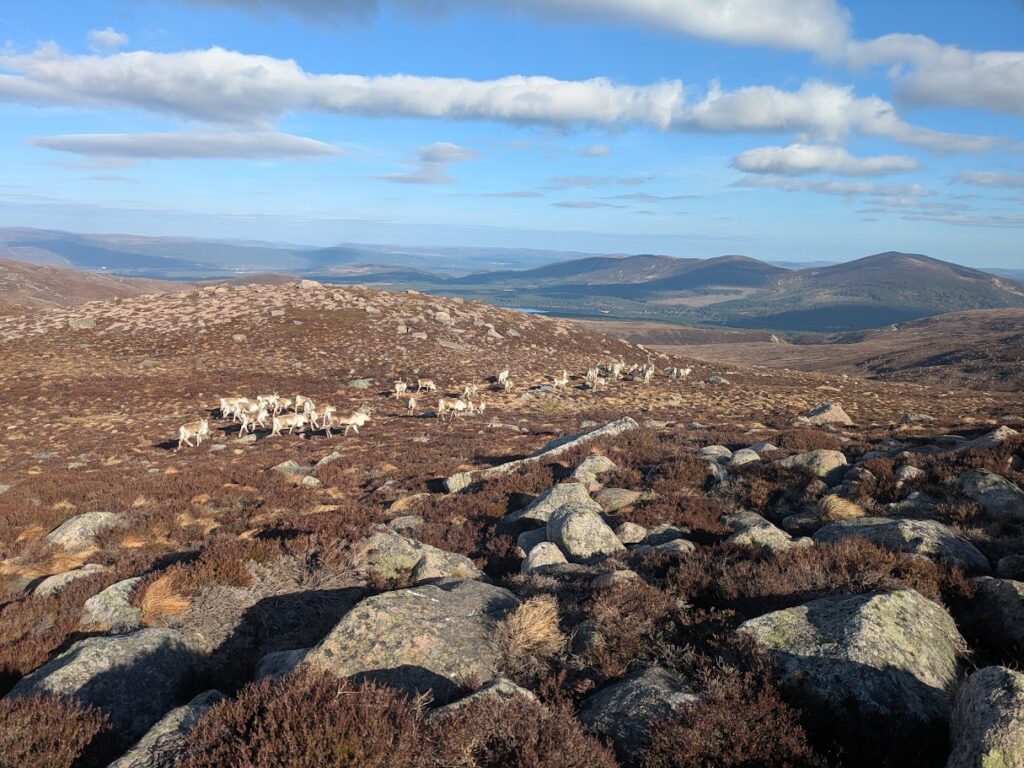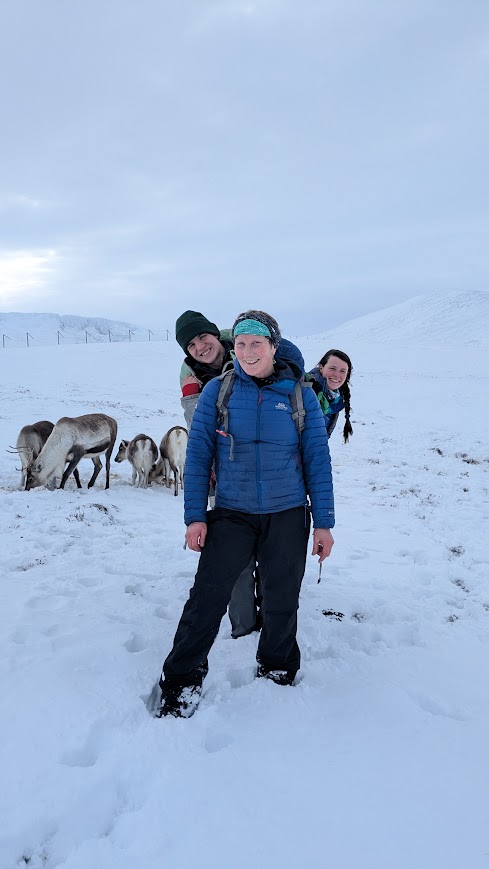This summer I have had a lovely spell of catching up with our cows and calves out on the free range. After missing both of the nights that we lead the cows and calves out onto the free range a small group decided that I couldn’t miss out and were found loitering outside the hill enclosure the following morning, it was a glorious morning to be moving reindeer and allowed me to spend some time with the group before they went to higher ground.
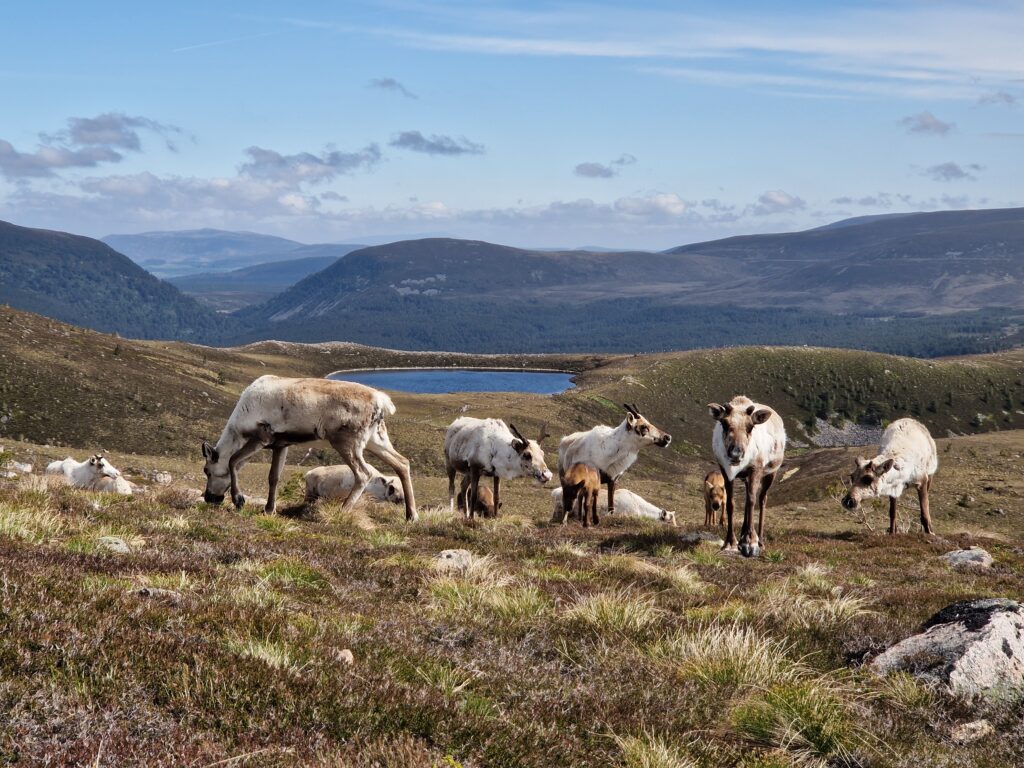
My first trip out to see the free rangers was at the end of July, heading to an area that the herd frequent through the summer; this is an area of the hill that I’ve heard a lot about, but hadn’t seen it first-hand. After a bit of a slog going up hill due to the heat, the temperature began to decrease, it became windier and a whole lot more comfortable (no wonder the reindeer like the top of the hills!) after a short period of time I stumbled across a group of cows and calves and began to identify them. I would say this is the most overwhelming part of heading out onto the free range as you want to try and document as much as possible so we can keep track of who we have seen and also take lots of pictures and videos to reference in the future. We are also trying to make it around the group to see what condition they are in and see if everyone is well in themselves, since the summer is when there can be long spells between us catching up with the females. I have included a few pictures of some of the girls that I caught up with on this trip. Due to the time of the year, they’re very scruffy as they are moulting out of their winter coat still and I could already see some impressive antlers. As I was enjoying my time with the herd, another group of older girls joined us – at a distance. Even at that distance you can see how epic Spy’s antlers are.
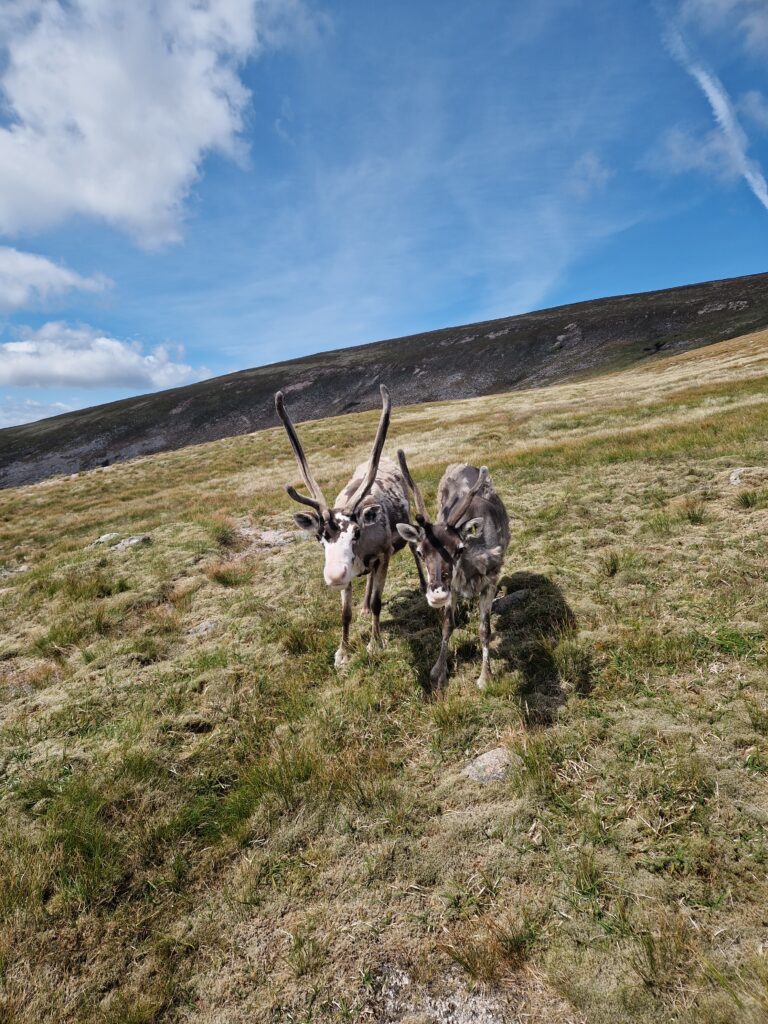
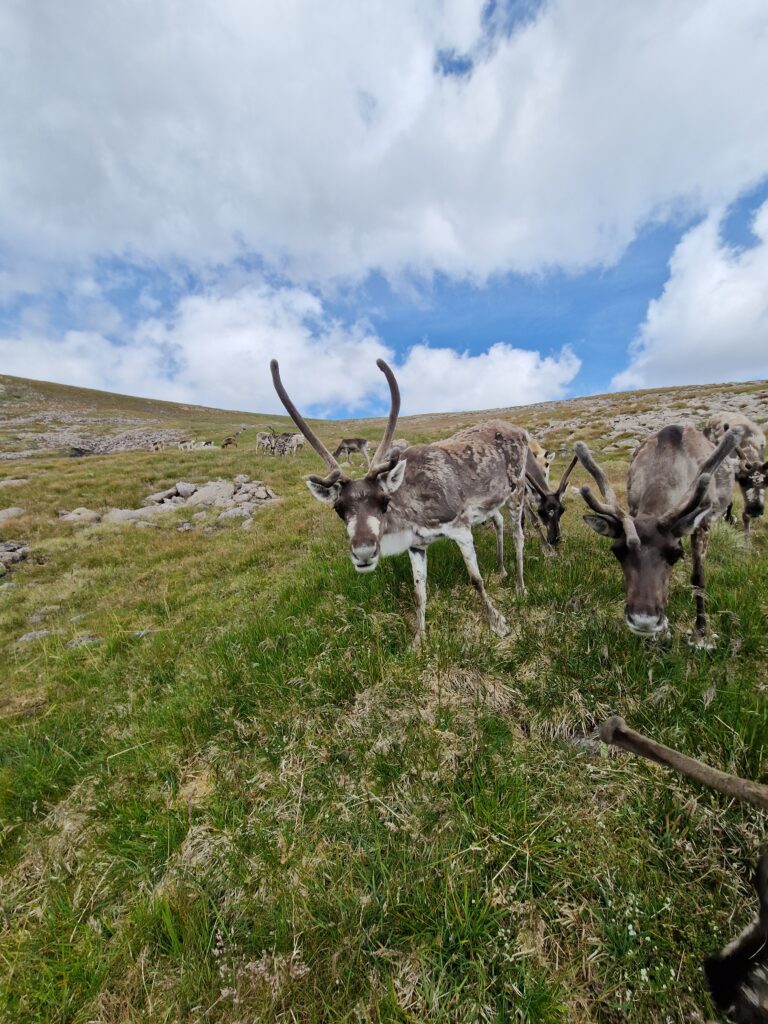
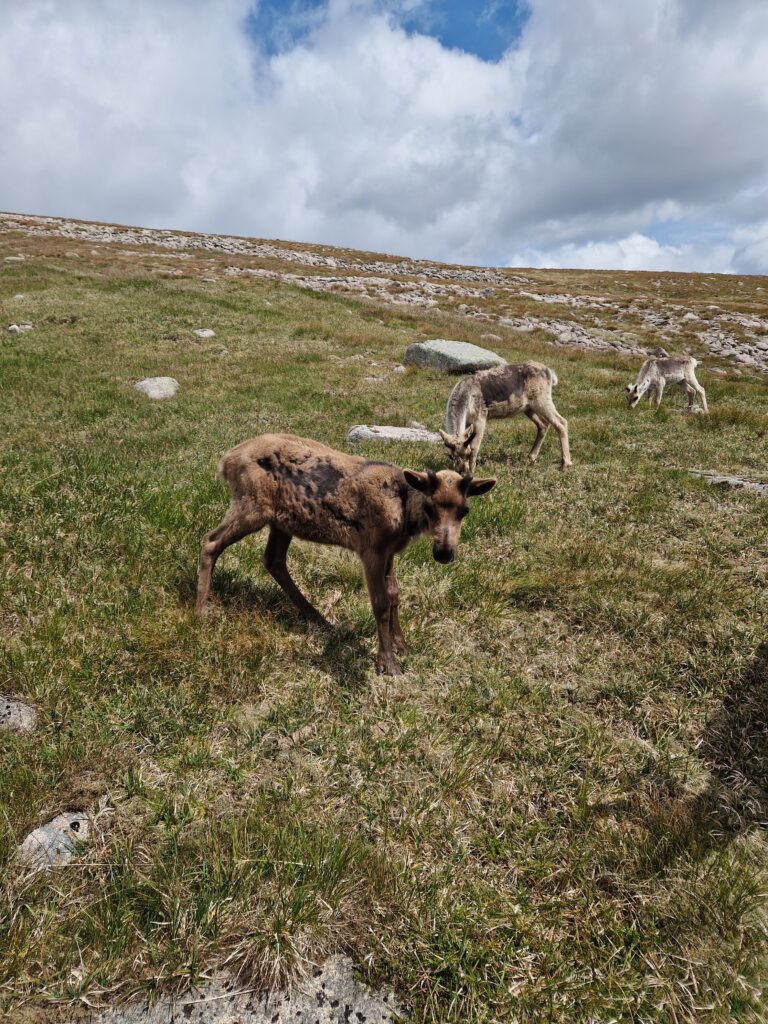
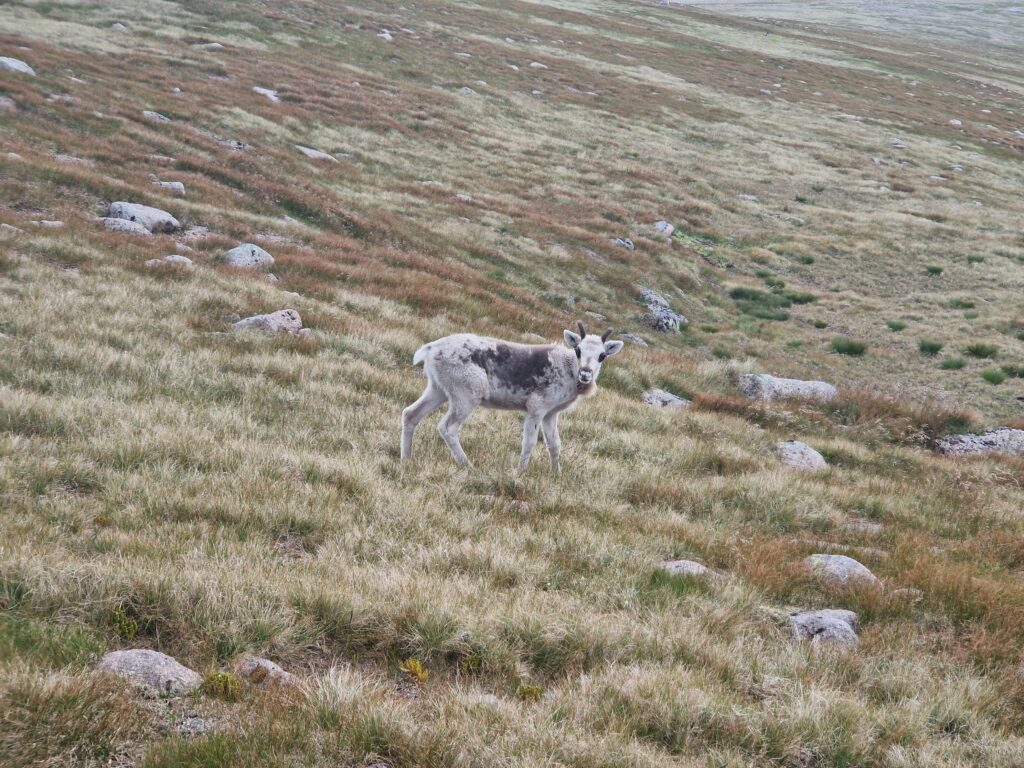

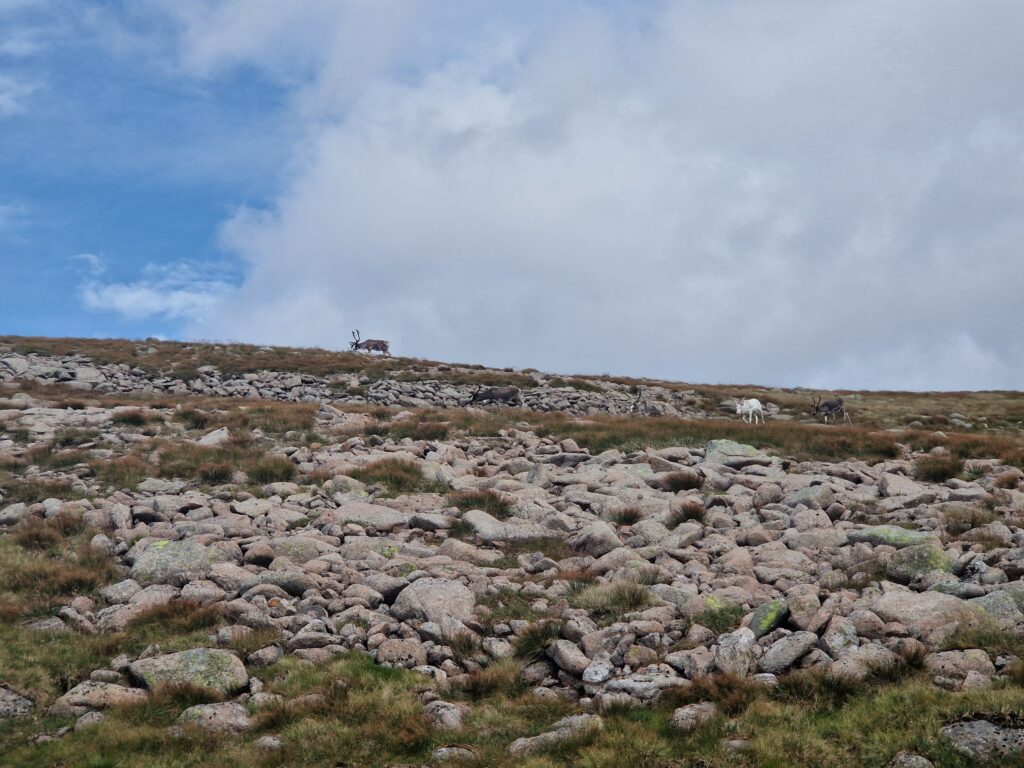
I am continuingly amazed at how much the reindeer move around on the free range and it definitely becomes more apparent during the summer; we can head out to different areas on the free range and still come across the same reindeer. Just over a week later, I went back out onto the free range and caught up with a smaller group of cows and calves (on another warm day, much to my dismay), but having these warmer spells means that you can almost guarantee that the reindeer will be higher up and lazing around rather than travelling great distances; making my life easier. It was a mixed group of reindeer I had seen the previous trip and some other cows that I hadn’t seen since they had gone out on to the free range, which was lovely as I could appreciate how the calves had changed in the week or so since I had last seen them.
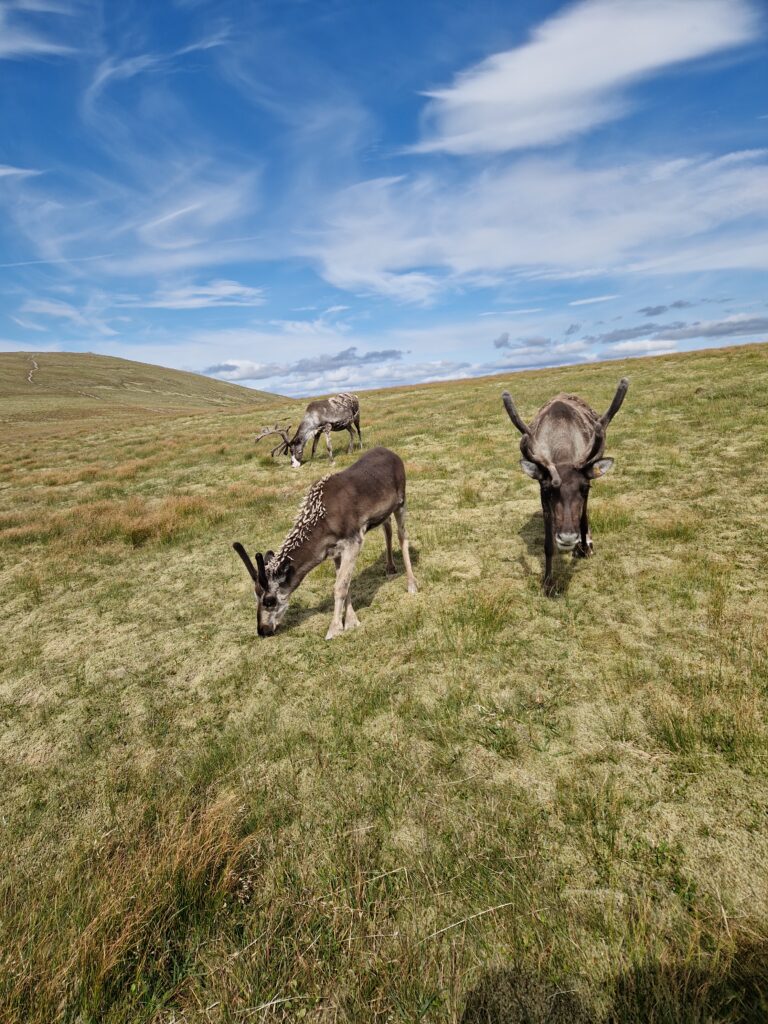
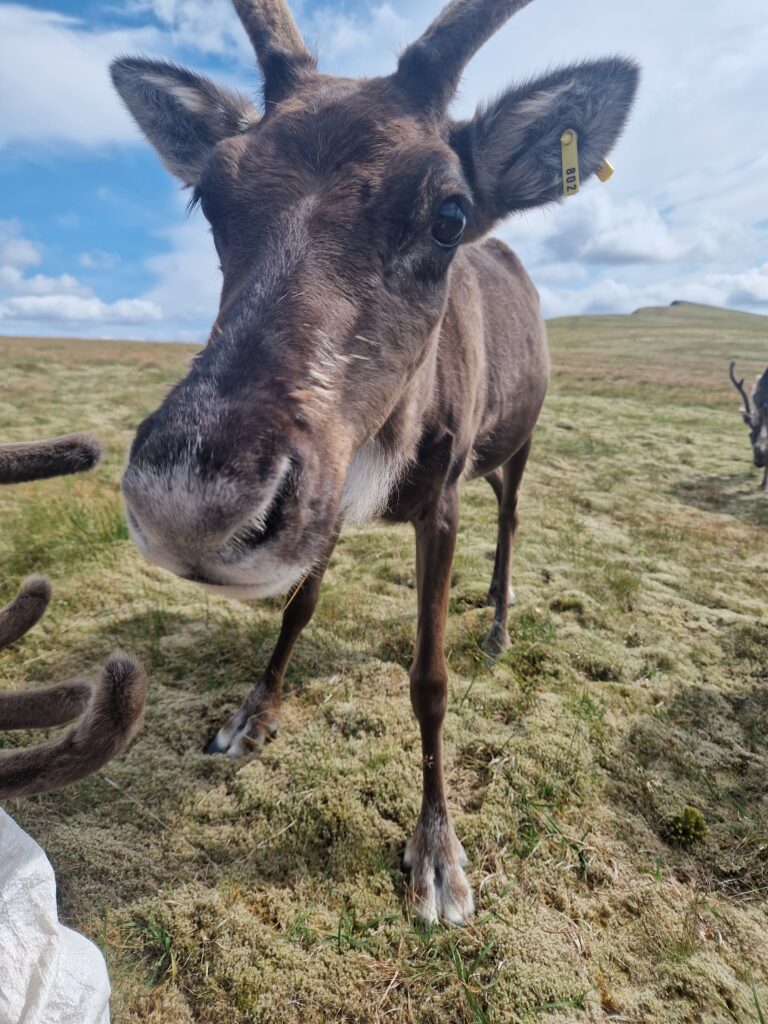
Amy























































